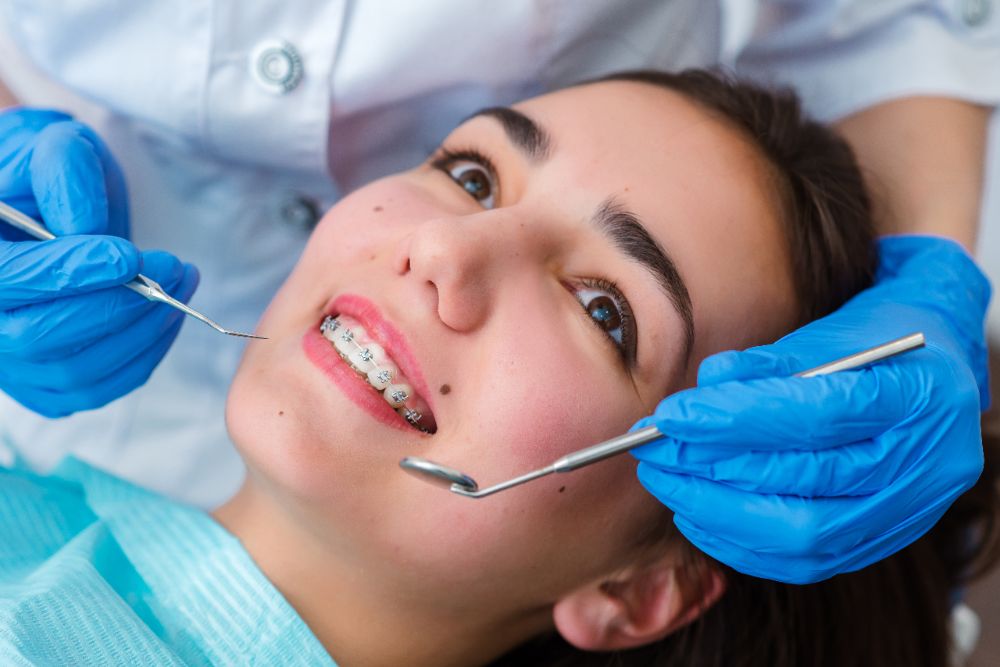How Cumming Orthodontics Addresses Common Braces and Invisalign Concerns
Comprehensive Guide to Orthodontics Treatments for Correcting Oral Imbalances
Recognizing the complexities of each treatment, including their systems, benefits, and prospective downsides, is vital in making informed decisions regarding one's orthodontic treatment. As we navigate through the extensive guide to orthodontic treatments for dealing with dental imbalances, the intricate details of each method will certainly unfold, losing light on the course toward a unified and useful oral alignment.
Orthodontic Procedures Introduction

Normal modifications and monitoring are critical components of orthodontic treatment to ensure development is on track and to make any type of necessary alterations along the method. By undertaking orthodontic treatments, patients can not only achieve a straighter grin however additionally enhance their total dental health and wellness and function.
Typical Dental Braces: How They Function
When taking into consideration orthodontic treatments for dental imbalances, typical braces stick out as a reliable approach for correcting teeth placing. Conventional dental braces include braces, cords, and bands that collaborate to use continual pressure on the teeth, gradually moving them into the desired positioning. The brackets are connected to the teeth making use of an unique adhesive, and the cords are threaded via the braces. By readjusting the stress of the cords, orthodontists can regulate the direction and pressure related to each tooth, leading them right into correct placement gradually.
As stress is applied to the teeth through the braces, the bone bordering the teeth is reshaped to sustain the brand-new tooth positions. Patients will require normal adjustments at the orthodontist's workplace to guarantee the dental braces continue to use the appropriate stress for efficient teeth movement.
Unseen Aligners: Cons and pros
Unseen aligners supply a hassle-free and discreet option to traditional braces for dealing with oral misalignments. These clear, tailor-made trays are virtually undetectable when worn, making them an attractive alternative for individuals looking for a more visually pleasing orthodontic therapy. One of the main benefits of unseen aligners is their removability, enabling easier upkeep of oral health compared to standard dental braces. Patients can remove the aligners prior to eating or brushing their teeth, decreasing the threat of food obtaining stuck in the appliance and simplifying the cleansing procedure.

Surgical Orthodontic Options
Surgical interventions in orthodontics existing practical options for attending to complex oral misalignments that might not be effectively settled with conventional orthodontic therapies. While unseen aligners and conventional dental braces can fix several orthodontic problems, particular instances need medical treatment to achieve ideal outcomes. Surgical orthodontic choices are typically advised for extreme malocclusions, considerable jaw disparities, and cases where the underlying bone structure requires alteration to achieve appropriate alignment.
One usual surgical orthodontic procedure is orthognathic surgical procedure, which involves repositioning the jaws to remedy useful concerns such as difficulty talking or eating. This surgery is typically executed in cooperation with an orthodontist who helps line up the teeth prior to and after the treatment. Surgical orthodontics might additionally involve procedures to expose impacted teeth, remove excess gum tissue, or reshape the jawbone to produce a much more unified face account.
Prior to visit site thinking about medical orthodontic choices, people undertake a thorough examination to determine the necessity and prospective benefits of such interventions. invisalign. While surgical treatment may seem complicated, it can substantially enhance both the function and appearances of the smile in instances where standard orthodontic therapies fall short
Retainers and Post-Treatment Care

Failure to abide with post-treatment care guidelines can result in relapse, where the teeth progressively move back in the direction of their initial positions. Regular retainer wear, great dental hygiene, and normal dental examinations are important for keeping the results attained through orthodontic surgical procedure and ensuring the long-lasting security of the corrected dental placement.
Conclusion
Finally, orthodontic procedures provide numerous options for fixing oral misalignments. Standard dental braces make use of metal brackets and cables to change teeth into proper positioning. Unseen aligners provide a more discreet option however may not be appropriate for all instances. Surgical orthodontic alternatives are available for much more serious imbalances. Retainers are commonly made use of post-treatment to maintain the new placement. Overall, orthodontic procedures can efficiently enhance oral wellness and aesthetic appearance.
As we navigate through the comprehensive guide to orthodontic treatments for dealing with oral imbalances, the complex details of each technique will unfold, losing light on the course towards a functional and unified dental alignment. - orthodontist
One of the most common orthodontic therapies is the use of braces, which consist of steel braces and wires that use mild pressure to gradually change teeth recommended you read right into the desired position.When taking into consideration orthodontic therapies for dental misalignments, traditional dental braces stand out as a tried and true approach for dealing with teeth positioning. Additionally, invisible aligners may not be suitable for intricate orthodontic problems that require even more considerable teeth movement, as they are commonly suggested for mild to moderate situations. Retainers are tailor-made orthodontic tools made to hold teeth in their fixed placements after the conclusion of orthodontic therapy.